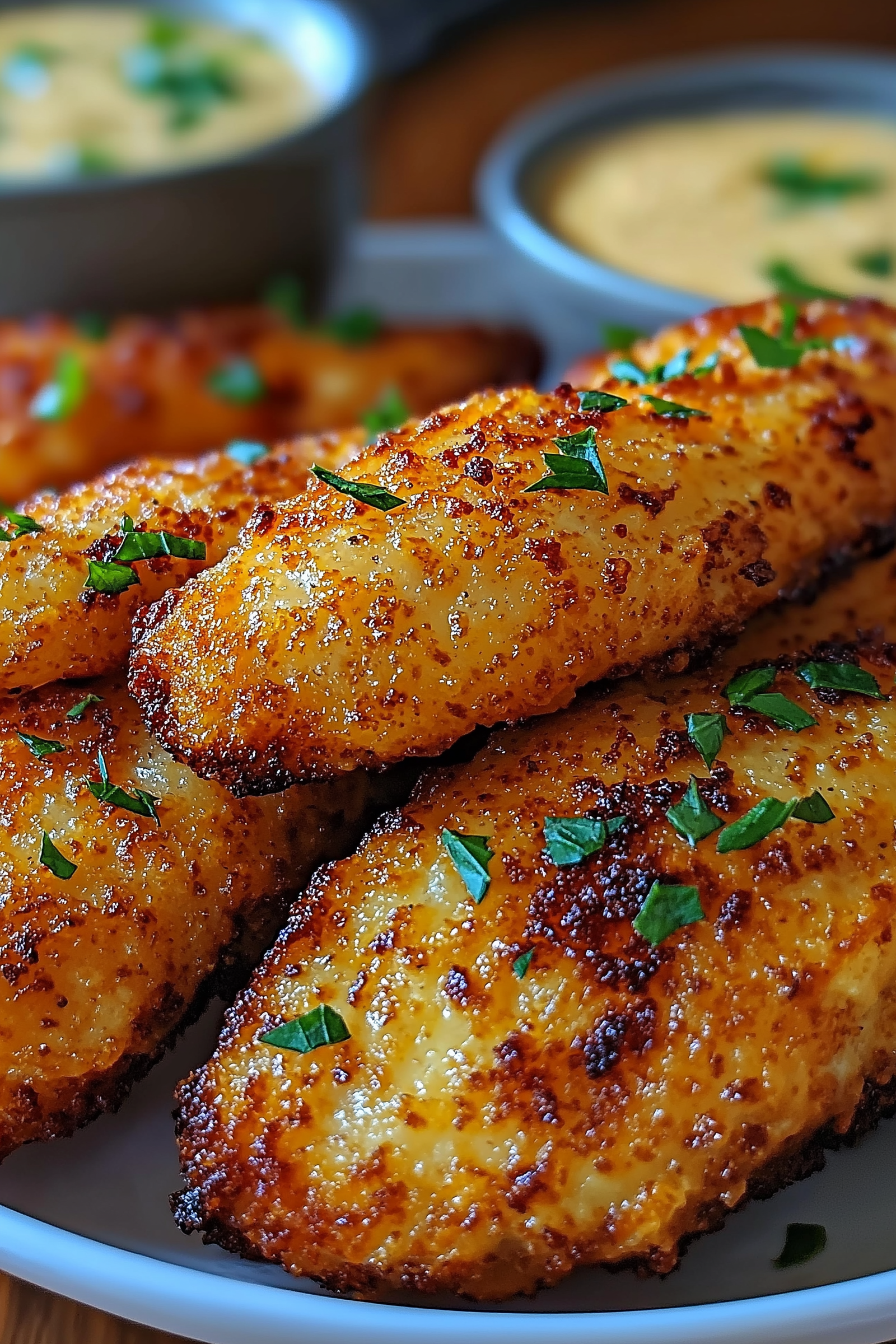Looking for a dish with crispy chicken tenders and a juicy inside? Crack chicken tenders are your next big find. They’re not just a meal, but a feast for your senses. Taking one bite, you won’t be able to stop.
In this journey, I’ll show you how to get that perfect crispy and juicy combo. With the right tips, you can unlock amazing flavors and improve your cooking.
Key Takeaways
- Crack chicken tenders are defined by their crispy exterior and juicy inside.
- These homemade chicken tenders are incredibly addictive, making them a must-try.
- The right cooking techniques enhance the flavor and texture of the tenders.
- Crack chicken tenders can be easily made with simple ingredients.
- Once you try these, you’ll want to make them again and again.
What Are Crack Chicken Tenders?
Crack chicken tenders have quickly become a favorite. They are known for their crispy outside and juicy inside. The crack chicken tenders definition is simple: chicken pieces are marinated in tasty seasonings. Then, they’re coated with crushed Ritz crackers or breadcrumbs. This mix makes the chicken tenders not just simple to make but also full of flavor.
The main difference between traditional chicken tenders and these ones is the taste. Ordinary chicken tenders can be plain, but crack chicken tenders are full of a seasoned flavor. This is often thanks to Ranch and Parmesan. It makes a simple meal seem fancy and delicious.
These tenders are great for many events. They work for a fast dinner on a weeknight, a snack, or a party appetizer. The recipe comes from different cooking styles, combining flavors that everyone loves. I suggest trying out different cooking methods. This way, everyone can find their favorite way to make the best chicken tenders.
The Irresistible Flavor of Crack Chicken Tenders
Creating the perfect chicken tenders flavor involves a mix of spices and marinades. Through testing, I found that more than simple seasoning is needed for flavorful chicken. Each ingredient must work together for a delicious taste.
Marinating the chicken tenders overnight helps the flavors soak in. Using garlic powder, paprika, and a bit of cayenne pepper enhances their taste. Sometimes, a splash of buttermilk is added to make them juicy and tender.
Serving these tenders with different sides can make the meal better. I enjoy them with coleslaw or fries. Below is a table of my favorite sides:
| Side Dish | Flavor Profile |
|---|---|
| Garlic Mashed Potatoes | Rich and Creamy |
| Honey Mustard Dip | Sweet and Tangy |
| Steamed Broccoli | Earthy and Fresh |
Adding fresh herbs like parsley or chives makes the dish even better. Each bite mixes different flavors, making it hard to resist. For more tips on tasty dishes, see this Parmesan Chicken recipe.
With the right mix of spices, good marination, and careful side choices, crack chicken tenders have become a must-have for me. They create a meal to remember every time.
Ingredients for Homemade Chicken Tenders
To make perfect homemade chicken tenders, you’ll need some key ingredients and optional ones for extra flavor. This mix lets you customize the taste. Let’s explore what you need for this tasty dish.
Essential Ingredients
I make sure these ingredients are ready before I start cooking:
- Chicken Breasts: The main ingredient, offering a juicy and tender base.
- Flour: This provides the initial coating that adds a slight crunch to each tender.
- Breadcrumbs: I prefer using Panko for its larger flakes, giving a delightful crisp.
- Eggs: Acts as a binding agent, ensuring that the breadcrumbs adhere well.
- Seasonings: A mix of salt, pepper, and my choice of spices can elevate the flavor.
Optional Add-Ins for Extra Flavor
To add more flavor to your chicken tenders, consider these optional ingredients. They can truly lift the dish. Here are my top picks:
- Garlic Powder: Adds a savory punch that complements chicken beautifully.
- Parmesan Cheese: Mixing this cheese into the breadcrumbs creates a rich, nutty flavor.
- Smoked Paprika: This spice brings a subtle smokiness that transforms the tenders.
- Marinades: A brief soak in buttermilk or a spice-based marinade can add depth.
By mixing essential ingredients and extra flavorings, you make a dish that’s tasty and allows for creativity. It’s all about mixing the right flavors.
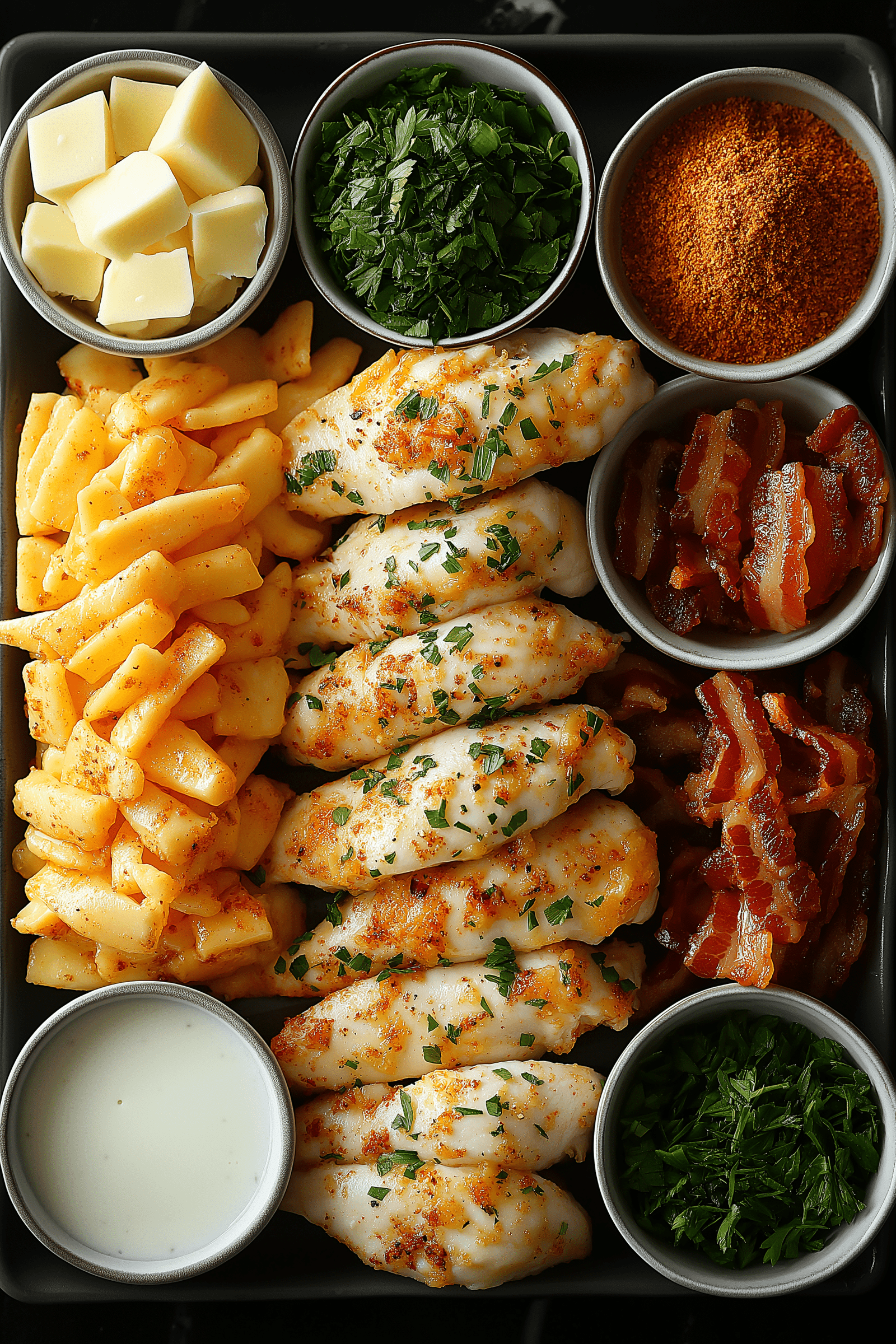
How to Make Easy Chicken Tenders Recipe
Making homemade chicken tenders is easy and enjoyable. I have a simple process that guarantees tasty outcomes every time. This recipe will guide beginners to achieve great-flavored chicken tenders. It’s perfect for a quick bite or a family dinner.
Step-by-Step Instructions
Here’s how to make amazing chicken tenders:
- Begin with boneless, skinless chicken breasts and slice them into strips.
- Soak the strips in buttermilk, salt, and pepper for an hour. This step makes the chicken extra tender.
- Set up a breading station with seasoned flour, beaten eggs, and breadcrumbs (panko is recommended for crunch).
- Dip each strip into the flour, then the egg, and lastly, breadcrumbs.
- Heat oil in a deep pan to 350°F (175°C). The right temperature is key for crispiness.
- Fry the chicken in small batches to avoid overcrowding. Cook until golden and done, which takes about 4-5 minutes on each side.
- Let the chicken drain on paper towels to get rid of extra oil.
Tips for Perfectly Crispy Chicken Tenders
For the crispiest chicken tenders, keep these tips in mind:
- Make sure the oil is properly heated before adding the chicken. This prevents it from being soggy.
- Opt for panko breadcrumbs to boost crunchiness.
- Don’t skip marinating the chicken. It’s crucial for softness.
- Allow the tenders a little rest after frying for the best crisp.
- Add different spices to your flour for more taste.
Stick to these instructions and tips for making chicken tenders, and you’ll have a plate of crispy, mouthwatering chicken tenders that will be a hit with everyone.
Why Are These Chicken Tenders So Addictive?
There’s a unique charm about addictive chicken tenders that hooks everyone. The mix of crunchiness, juiciness, and flavors delights our senses. Each bite gives us a mix of textures and tastes that make us happy.
Why chicken tenders are so good isn’t just about their taste. They remind us of happy times like childhood meals or family meet-ups. This makes us crave them even more and hard to stop at just one.
Our brains have a special area that loves foods like these. When we eat a tender, its crunch and taste release dopamine. This makes us want even more. So, we often go back for seconds.
Chicken tenders can be made in many ways. From the classic fried to new flavors like buffalo, they’re all hard to resist. For quick meals, using pre-cooked tenders can save time and still taste great.
For a perfect chicken meal, customizing casseroles with tenders can be exciting. It’s the mix of comforting ingredients that makes shared meals with chicken tenders so special.
Healthier Alternatives to Traditional Chicken Tenders
Looking for healthier chicken tenders doesn’t mean giving up taste or enjoyment. I love trying new ways to cook tasty meals that keep me healthy. By changing how they’re made, we can enjoy chicken tenders without feeling bad.
Baking vs. Frying
Choosing between baking and frying chicken tenders is a big deal. Baking chicken tenders is usually better for those who want a lighter option. It gives a crispy feel without lots of oil, which is good for eating better. On the other hand, frying adds extra calories and fats, impacting health.
After testing several methods, the differences were clear. Baking can make chicken tender, juicy, and crispy. Here’s a quick look at the health differences between these methods:
| Cooking Method | Calories per Serving | Fat Content (grams) | Crispiness Level |
|---|---|---|---|
| Baking | 220 | 8 | Moderate |
| Frying | 350 | 18 | High |
While both ways have benefits, baking is the healthier choice. If you want a great recipe for healthier chicken tenders, you can find one here.
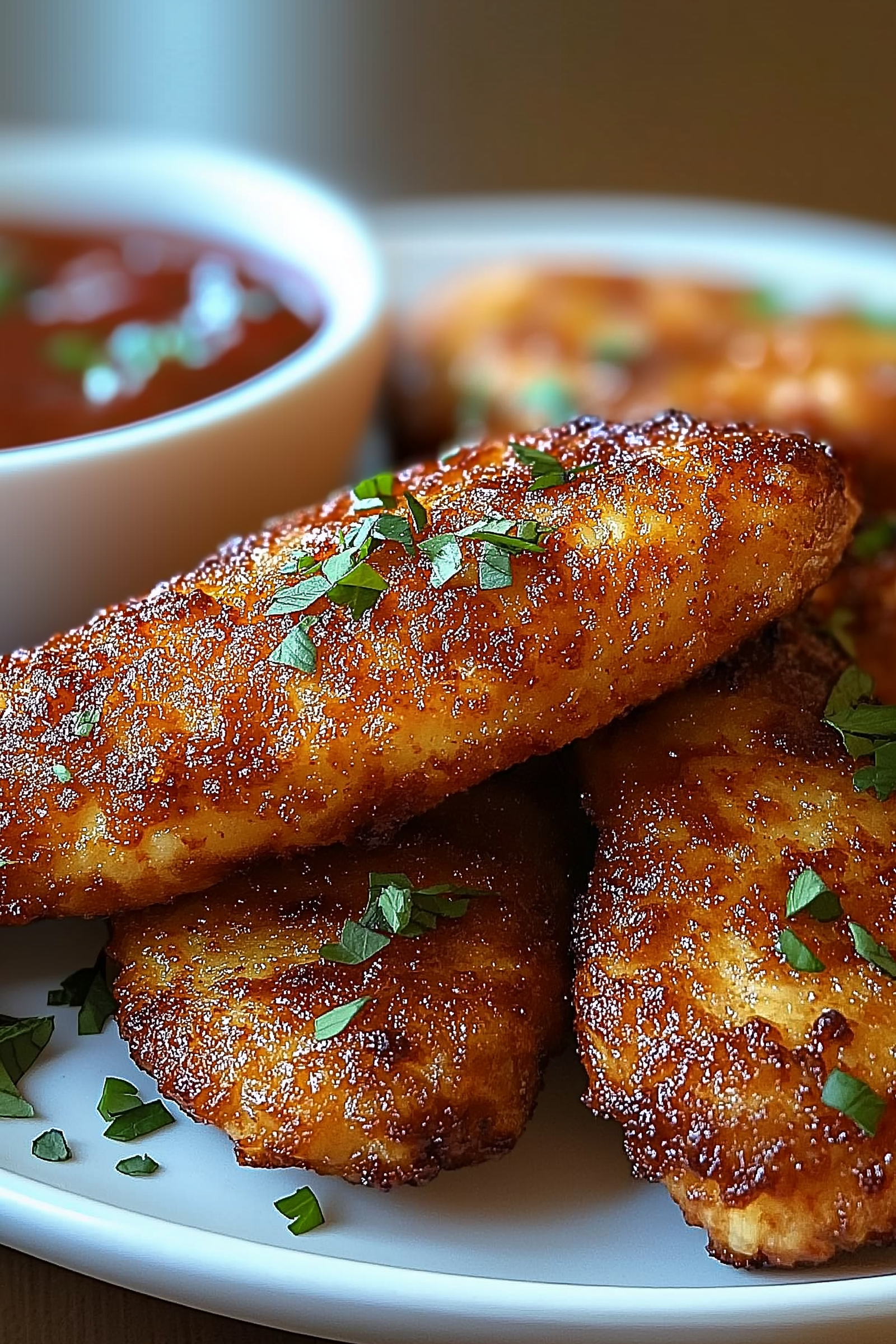
Pairing Suggestions for Flavorful Chicken Tenders
Finding the right sides for chicken tenders can make your meal much better. I enjoy trying different flavor pairings for chicken to boost the taste and add an interesting twist. My top picks for sides are designed to match the crispy, juicy chicken perfectly.
- Sweet Potato Fries: Their sweetness offsets the savory chicken tenders nicely.
- Coleslaw: It adds a crunchy and tangy fresh contrast.
- Macaroni and Cheese: Its creamy texture goes great with crispy chicken.
- Garlic Parmesan Crusted Broccoli: It brings a tasty, healthy touch.
There are plenty of dipping sauce choices. I love honey mustard or ranch dressing with chicken tenders for great flavors. If you like it spicy, try buffalo sauce or sriracha mayo. Trying different sauces makes your meal more exciting.
Don’t overlook your drink! A cool iced tea or light beer can enhance your meal. For tips on cooking chicken tenders, check this recipe. The best pairings change a simple dish into a memorable feast. They prove that chicken tenders are versatile. Whether it’s a laid-back dinner or hanging out with friends, mixing flavors and textures creates a standout meal.
Crack Chicken Tenders Versus Cracker Barrel Chicken Tenders
Choosing between homemade crack chicken tenders and Cracker Barrel’s can be tricky. Both have a special place on the dining table. This comparison sheds light on both, focusing on taste, texture, and overall joy of eating.
Comparing Homemade and Restaurant Versions
My homemade tenders are a hit because they blend flavors and textures beautifully. They’re crispy outside but stay moist inside. But Cracker Barrel’s tenders bring their own appeal. They’re known for a consistent, familiar flavor that’s hard to beat. Let’s dive into the details.
| Feature | Crack Chicken Tenders | Cracker Barrel Chicken Tenders |
|---|---|---|
| Taste | Flavorsome and customizable | Classic with a signature seasoning |
| Texture | Crispy on the outside, tender inside | Consistently crispy and tender |
| Preparation Time | 20-30 minutes | Ready to eat upon ordering |
| Cost | Inexpensive, depending on ingredients | Moderately priced |
| Portion Size | Flexible | Standardized servings |
When you compare homemade to restaurant chicken tenders, each has its strengths. My version allows for customization, while Cracker Barrel provides ease and a taste you can count on. Both options offer unique perks for those who love their chicken tenders.
Common Mistakes to Avoid for Juicy Chicken Tenders
Getting chicken tenders just right involves looking out for small errors. Mistakes in chicken tenders cooking have taught me a lot. Here are some tips to help you avoid common issues and get those tenders perfectly juicy.
- Overcooking is a big reason chicken tenders dry out. A meat thermometer can ensure they remain juicy.
- Pick the right chicken cut for more moisture. Both chicken breast and thighs work great.
- Under-seasoning can make tenders taste dull. A good spice mix can really bring out their flavor.
- Avoiding a cooling rack can make your tenders soggy. Cooling racks mean better air flow and crispiness.
I learned from my early mistakes and it changed how I cook. If you want to improve your chicken tenders, try this amazing recipe. It’s all about avoiding dryness through the right cooking practices.
| Mistake | Impact | Solution |
|---|---|---|
| Overcooking | Dry, tough texture | Use a meat thermometer; cook to 165°F. |
| Wrong cut of chicken | Less moisture | Use chicken breasts or thighs. |
| Under-seasoning | Bland taste | Season generously before cooking. |
| No cooling rack | Soggy tenders | Place on a cooling rack for baking. |
By being careful to avoid these mistakes, you’ll make tender, tasty chicken strips every time. Keep these pointers in mind for your next cooking session. It will be a delicious experience.
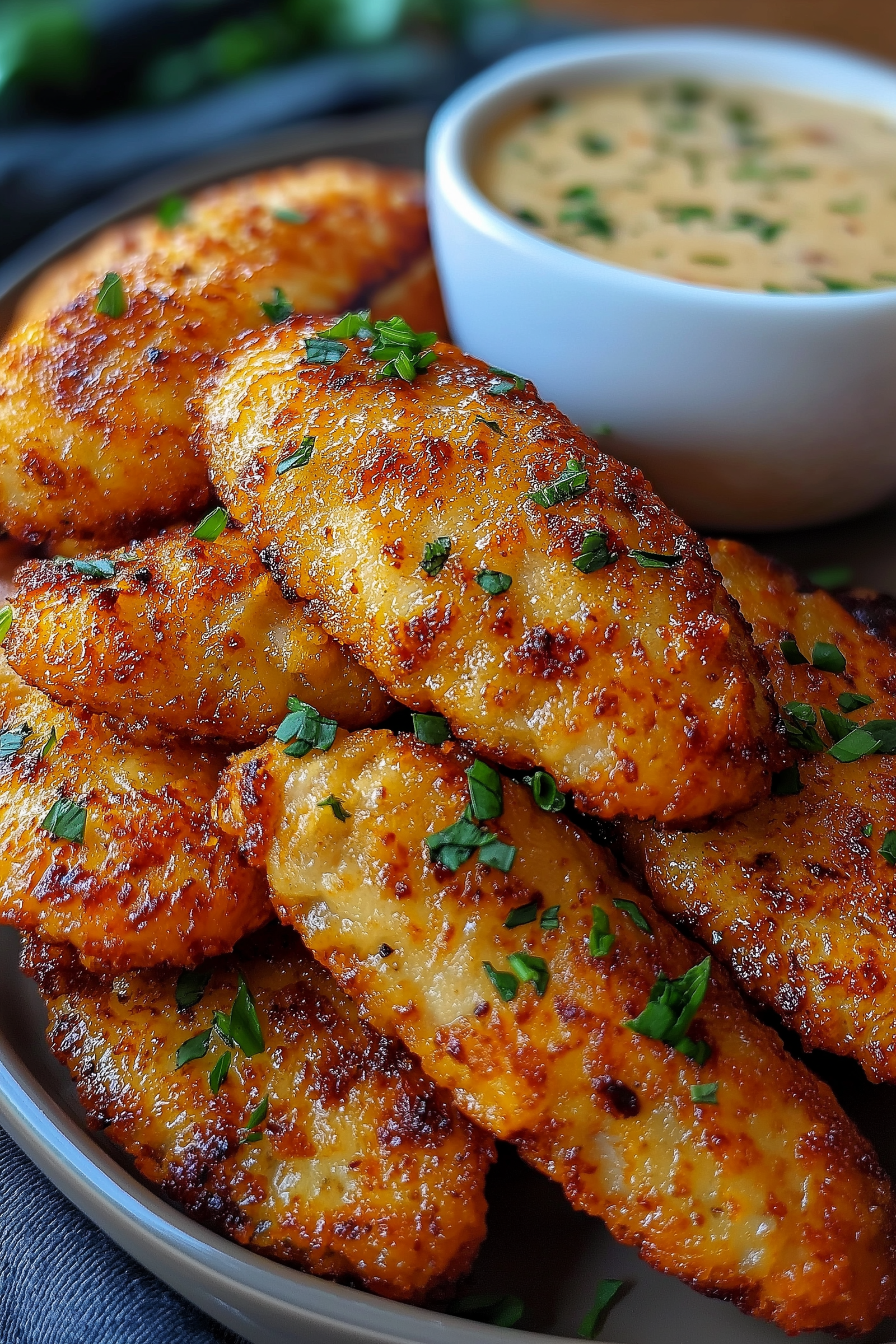
Storing and Reheating Your Chicken Tenders
Storing and reheating chicken tenders right can mean tastier meals. I learned that good storage tips keep my chicken delicious, like newly cooked. Here’s how I do it.
Best Practices for Storage
To keep chicken tenders fresh, use airtight containers. I put a paper towel at the bottom to absorb moisture. This stops them from becoming soggy. Follow these steps:
- Let chicken tenders cool before storing.
- Put them in a single layer in a container to stay crispy.
- Use parchment paper between layers if you need to stack them.
- Seal the container well and refrigerate within two hours of cooking.
- Eat them within 3 to 4 days for best taste.
For reheating, ovens or air fryers are best. They keep the chicken crunchy and warm it up the right way. I don’t suggest microwaves because they can make the chicken soggy.
To reheat in the oven, set it to 375°F (190°C). Place chicken on a baking sheet and cover with foil. This keeps them from drying out. Bake for 10-15 minutes, checking now and then. In air fryers, 5-7 minutes at 375°F makes them perfect. This method keeps the flavor great, making every bite as enjoyable as the first.
Creative Serving Ideas for Crack Chicken Tenders
I love finding creative ways to serve chicken tenders that look good and taste great. Here are some top ideas:
- Platter Perfection: Arrange your chicken tenders on a wooden or slate board. Include a variety of dips, such as honey mustard, ranch, and spicy aioli, to create a visually stunning and interactive platter.
- Dip Station: Set up a dip station with different sauces in small bowls. From barbecue to sriracha ranch, guests can mix and match their favorite flavors while enjoying the tenders.
- Wrap It Up: Use fresh lettuce leaves to create wraps with chicken tenders, sliced vegetables, and a drizzle of sauce. This adds a fresh twist and makes for a fun finger-food option.
- Tender Tacos: Shred up some chicken tenders and serve them in soft tortillas, topped with avocado, salsa, and shredded cheese. This is a perfect way to spice up traditional serving methods.
- Bite-Sized Appetizers: Cut chicken tenders into smaller pieces and serve them on toothpicks with a selection of dipping sauces, making them perfect for parties and gatherings.
Trying new ways to show off crack chicken tenders can make a simple meal feel fancy. By using these creative ways to serve chicken tenders, I make sure my guests have a fun, tasty meal that also sparks joy and conversation.
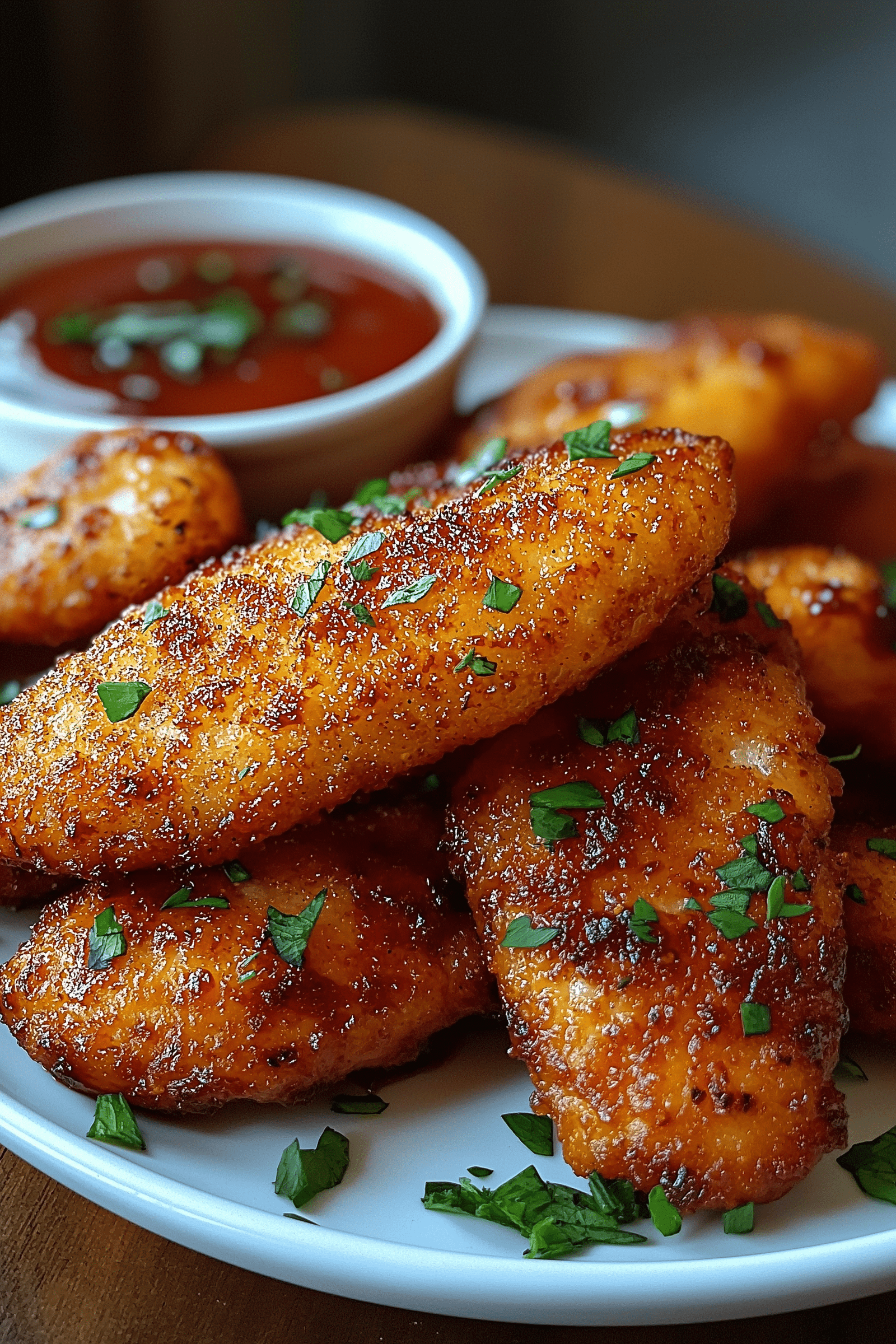
Conclusion
We’ve dived into the world of crack chicken tenders, talking about their amazing taste and simple cooking steps. We covered everything from what you need to how to get them just right. It’s been shown how making these at home can be fun for anyone. Making chicken tenders this way brings fun to any event, family dinner, or when you just want a delicious snack.
In wrapping up, I want to inspire you to try making these yummy chicken tenders yourself. Feel free to play with different spices or sauces to find what you love. No matter if you bake or fry them, these chicken tenders are likely to become a favorite in your home.
I really encourage you to try making crack chicken tenders and step up your cooking skills. With some creativity and the proper ingredients, you might find a new favorite meal. This could be something that excites both you and your family!
FAQ
What are crack chicken tenders?
How do I achieve crispy chicken tenders?
Are homemade chicken tenders healthier than store-bought options?
What are some good sides to serve with flavorful chicken tenders?
Can I make crack chicken tenders in advance?
What makes these chicken tenders so addictive?
How do they compare to Cracker Barrel chicken tenders?
What are some common mistakes to avoid when making chicken tenders?
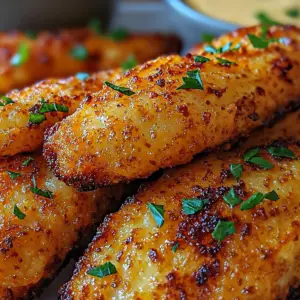
Crack Chicken Tenders
Ingredients
- 1 lb 450g chicken tenders
- 1 cup 240ml buttermilk (for soaking, optional)
- 1 cup 100g shredded cheddar cheese
- ½ cup 60g grated Parmesan cheese
- ½ cup 50g cooked bacon, crumbled
- 1 packet 1 oz dry ranch seasoning mix
- 1 teaspoon garlic powder
- 1 teaspoon onion powder
- ½ teaspoon smoked paprika
- ½ teaspoon black pepper
- 1 cup 120g panko breadcrumbs
- 2 tablespoons melted butter
Instructions
Preheat Oven:
- Preheat oven to 400°F (200°C) and line a baking sheet with parchment paper or grease it lightly.
Marinate the Chicken (Optional):
- Soak chicken tenders in buttermilk for 30 minutes to 1 hour for extra tenderness.
Prepare the Coating:
- In a bowl, mix cheddar cheese, Parmesan cheese, crumbled bacon, ranch seasoning, garlic powder, onion powder, smoked paprika, and black pepper.
- Stir in panko breadcrumbs and melted butter for extra crispiness.
Coat the Chicken:
- Remove chicken from buttermilk (if marinated) and coat each piece evenly in the breadcrumb mixture, pressing to adhere.
Bake the Chicken:
- Arrange coated chicken tenders on the prepared baking sheet.
- Bake for 20-25 minutes, flipping halfway through, until golden brown and crispy.
- For extra crispiness, broil for 2 minutes at the end.
Serve & Enjoy:
- Serve hot with ranch dressing, honey mustard, or your favorite dip.
Notes
- Air Fryer Method: Cook at 375°F (190°C) for 10-12 minutes, flipping halfway.
- For Extra Crispiness: Double coat the tenders in the breadcrumb mixture.
- Use Chicken Thighs: Swap chicken tenders for boneless thighs for juicier results.
- Storage: Store in an airtight container in the fridge for 3 days, or freeze for up to 3 months.


